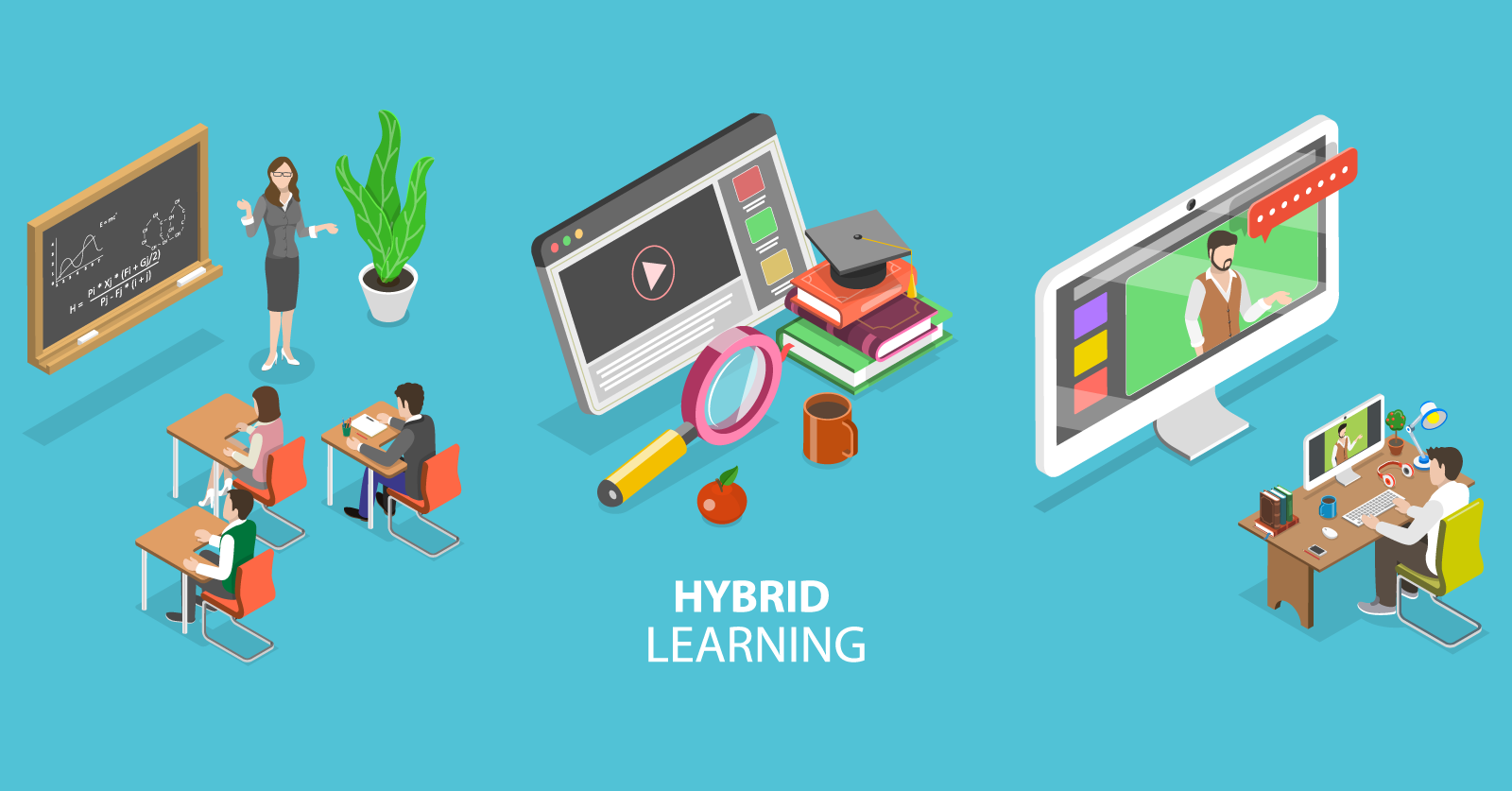- John Wellwood
- August 02nd, 2022
Adult learning classes, professional development courses and taking extra qualifications all offer career-building benefits. They’ll help open new doors for you and facilitate personal growth. Whether you want to learn a new language, switch careers or add to your portfolio of professional skills, it’s always recommended you wholeheartedly grab learning opportunities.
However, we know that is easier said than done. Life is busy. Aside from your job, you may have family commitments, community roles, athletic pursuits and hobbies, a household to run, and a lot more going on. You may feel like taking on a course is impossible right now.
But have you considered a blended learning approach? This may be the solution for you.
Read on to find out how and why blended learning works for busy professionals.
What is blended learning?
Blended learning (sometimes called ‘hybrid learning’) combines classroom education with e-learning. So, if you enrol in a blended learning course, you would expect to take some classes face-to-face with a teacher. However, you’ll also take a portion of your course online.
In reality, any two blended learning courses can look quite different. For a start, the relative proportions of in-person and e-learning may be divided differently. One may be mostly class-based, another may be mostly online, and some may be evenly split. As a rough guide, you can expect the online aspect of blended learning courses to be anything between 30 and 70 percent.
The teaching methods could be quite different, too. Some courses may use a lot of live video conferencing, others may use more gamification and interactive activities. Some courses may require you to read textbooks or watch recorded lectures.
Some blended learning courses can also be very structured, whereas others may be more self-directed.
The varying characteristics of blended learning courses are one of their more interesting features and biggest advantages.
Why does blended learning work well for busy people?
There are compelling reasons why blended learning is ideal for busy people who still want to build on their knowledge, skills and professional qualifications.
1. It’s flexible and accessible.
Taking a course that only teaches in person is unlikely to work for you. This could be because there’s no course available in a convenient location. It may require travel time or costs that you just can’t cover. On the other hand, if you are only required to attend classes occasionally, this may make the course more accessible. Many providers are willing to be flexible about course delivery to suit the needs of their students.
Blended learning courses reduce commuting time, meaning you have more time available to learn. Some blended learning courses may include some bite-size online materials, meaning you can squeeze learning into your lunch break, daily work commute, or a little into the evening. These training options are so much easier to fit in around a busy schedule than traditional evening or weekend classes.
Learning the hybrid way may mean you can complete a course faster than if you were attending in-person only. You can, therefore, enjoy the benefits of learning or getting a new qualification faster.
2. It’s effective.
Because you’ll be able to work through much of the course at your own pace, you can study on a schedule that suits you best. This optimises your ability to learn online.
However, because you will also be attending in-person classes, you can benefit from your teacher’s direct input, too. You can ask questions in class, get feedback on your ideas, enjoy discussions with peers and get help with trickier aspects of the course. If you are intending to learn a new language, practising your speaking and listening skills in class is an invaluable opportunity for developing confidence and mastery.
Lots of new technologies and gamification techniques are coming into the e-learning aspect of both in-person and online learning. This is really great for maintaining interest and motivation.
If you choose a course with the right ratio of online to in-person learning to suit you and your situation, you are going to excel. You’ll be ready and motivated to learn at the right pace for you.
3. It ensures freedom of choice.
Blended learning is opening up many more opportunities for people who would otherwise find it difficult to find the time or funds to complete a new qualification, learn a new language or add some skills to their resume.
The different features of blended learning courses also mean that you can pick one that best suits you and the style of teaching and learning you enjoy.
Go and check out what’s available in your area of interest.
Training organisations are getting better and better at tailoring courses to suit the schedules and needs of prospective students.
So, whether you are looking for a project management course, language training, leadership development or any professional qualification, the right course is out there for you.
AUTHOR BIO
Jerrin Samuel is the Executive Director at Regional Educational Institute (REI) in Abu Dhabi. Since 1995, REI has been at the forefront of education by delivering quality corporate training courses in the UAE, helping many businesses and organisations achieve greater productivity and higher customer satisfaction levels.

